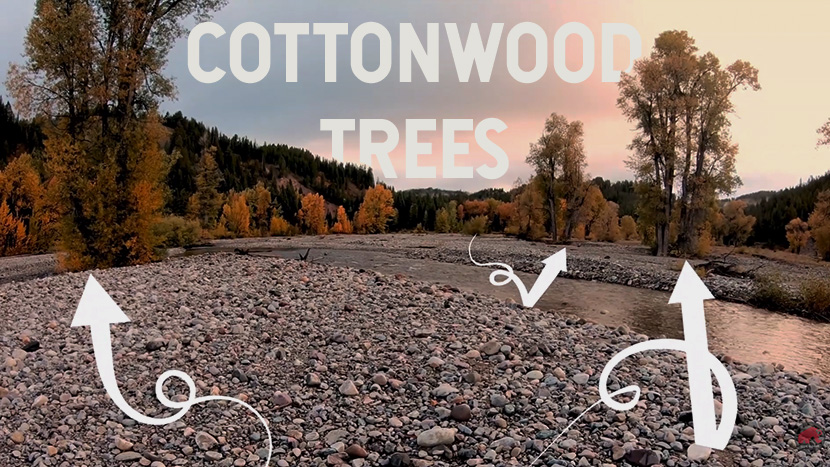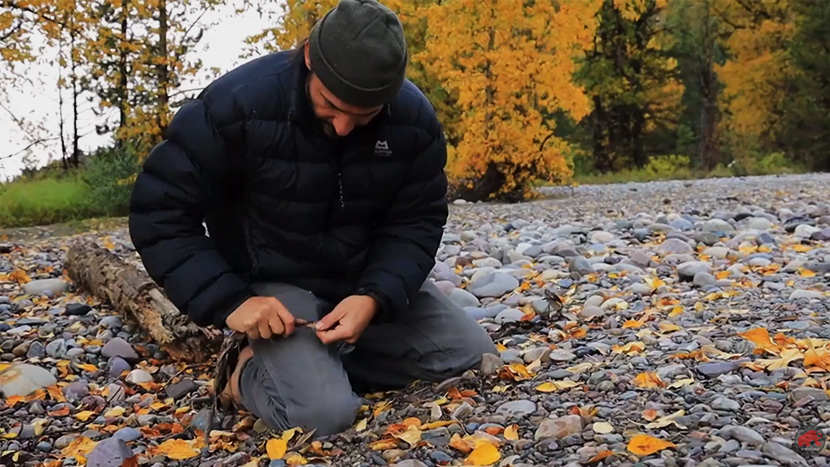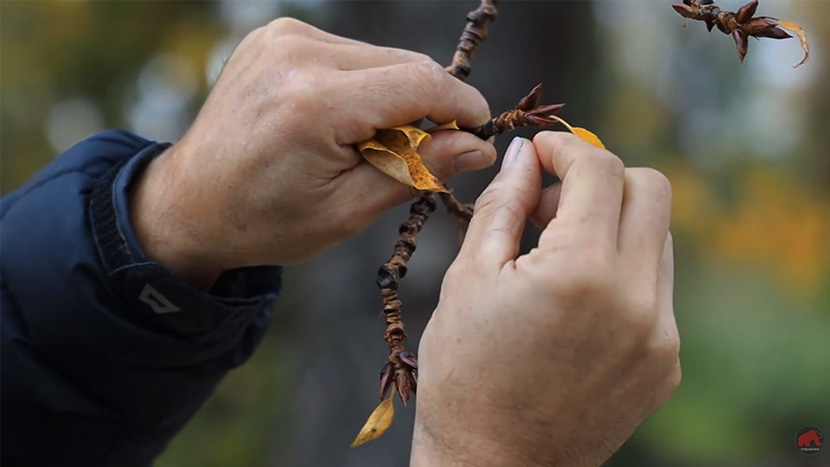Cottonwood Trees and Their Uses

An old Dakota legend speaks of a star that wished to be closer to the beautiful sounds coming from a village of people. Forbidden from living near the people, as its bright light would distract them from their lives, the star hid itself inside a tree so that it could stay near the village and enjoy the sounds of kindness and love shared between the villagers. This tree was none other than a Cottonwood tree.
Cottonwoods are large trees that live in conditions that difficult for many other tree species to survive in. They have many great uses for people, are historically significant, and are of ecological importance. So, what is a cottonwood tree, how do you identify one, and what are the uses of Cottonwoods for people?
Cottonwood Tree Basics
Cottonwood trees belong to the Populus genus, which also includes poplars and aspens. The main species are Eastern Cottonwood (Populus deltoides), Black Cottonwood (Populus balsamifera), and Fremont Cottonwood (Populus fremontii). They are large, long-lived trees that tend to grow in riparian areas – meaning along riverbanks or on lakeshores. Cottonwood trees can be used medicinally, to make rope with bark, and are important ecologically.
Cottonwood trees love lots of water and a lot of sun, in fact they do very badly in shade, this is why we find them along riverbanks and bordering lakes. They are also able to tolerate seasonal flooding that happens along many rivers. So if you see a lot of the same tree in a flood plain or a riverbank, there is a good chance that it is a cottonwood. But how can you be sure?

How to Identify a Cottonwood Tree
There are a couple different species of Cottonwood trees that will have slightly varied features, but the main identifying factors are similar. However, using a local plant guide is your best bet to get familiar with the ones in your area. You can try to narrow it down to species depending on where you live. The range of Cottonwood trees looks like this:
- Eastern Cottonwood is found in the Eastern US and South Eastern Canada.
- Black Cottonwood grows west of the Rocky Mountains, from Baja California all the way to Alaska.
- Fremont Cottonwood can be found in California, Utah, Arizona, and even North Western Mexico.
You can identify a Cottonwood tree by these characteristics:
- The leaves are large, simple, and triangular, many say they are “heart-shaped.” The edges of the leaves are toothed. Oddly enough, you can also identify Cottonwoods leave by sound, since they make a distinct rustling sound in the wind. Though this is also true with Poplar and Aspen trees.
- Cottonwoods are large trees reaching 60 to 100 feet (18 to 30 meters) or taller. The trunk is usually straight and the canopy of the tree is wide.
- Cottonwood leaves are bright green on the upper surface and pale or silvery green underneath. This makes for a beautiful sight on a windy day, especially because they also make that distinct rustling sound. In the fall, the leaves will turn bright yellow.
- Cottonwood buds are quite large, long, and pointed. They are yellowish green in spring and become more reddish later in the season. They have a distinct menthol-like smell and a sticky red resin inside.
- The bark on mature trees is really thick, furrowed, and rough. It is gray to grayish brown.
- Cottonwood trees are diecious – meaning that male flowers grow on one tree and female flowers on the other. The female Cottonwood trees have seed pods that look like elongated capsules filled with a bunch of cotton-like fibers for seed dispersal – hence the name of the tree. Male Cottonwoods on the other hand, produce catkins, which are cylindrical clusters of small flowers that release pollen.
Uses for cottonwood trees
Ecological importance of Cottonwood trees
The young branches and buds on Cottonwoods are an important food source for wildlife. The moist nature of these trees means that they are susceptible to fungi, which is bad for the tree, but can allow them to host a lot of insects, and therefore provide food and shelter for woodpeckers. They also occupy areas that are hard for other trees to grow, providing a key function in riverbeds and along lakes, especially as bird habitat for nesting.
Make Rope With Cottonwood Bark
This is where the survival skills come in! You can actually make rope from the inner bark, or cambium layer, of Cottonwood trees!
The cambium layer is the actively growing part of the tree and it is quite stringy, making it great for making rope! There are also records of people eating this, but more on that below.
To make rope with Cottonwood bark, you need to find a tree that has some of the outer bark peeling off and is starting to rot. Now, you need to find a tree that is beginning to rot but is not overly rotten, or you will end up with material that is too soft to make good rope.
After you have found the tree that is just right, you can peel away the outer bark and collect the stringy inner layer. This material can then be twisted together, rolled, and doubled in on itself to make rope. Watch the video to see the process, and check out this blog on making rope with natural fibers for more!
Building with Cottonwood Trees
Cottonwood trees are not known for having particularly strong wood, so they aren’t good for building materials in general, however, the wood can make nice furniture, is good for carving utensils or figures, makes great pulp. and is often used for flooring in delivery trucks and ship because they wood doesn’t crack and splinter, instead it gets sort of “fluffy.”
Cottonwoods for Medicine and More
The Cottonwood tree has been used for a long time in many different ways. A few non-medicinal uses of Cottonwood trees for Native American cultures are:
- Using the wood to smoke leather
- Using the wood for canoes
- Making toys and spiritually important figures
- Eating the cambium
- The sticky resin can be used as a glue
- Using the young branches to feed horses
- Making yellow dies from early spring leaves
- The leaves can be shaped to make whistles that create a really special sound
- Seed pods can be Chewed like a gum
Medicinal Uses of Cottonwood Trees
Cottonwood trees have a lot of great medicinal properties in the resin in the leaves, and especially that found in the buds. The resin:
- Is Antimicrobial
- Can decrease inflammation
- Can decrease pain
- Has preservative qualities

Though they have many great properties, you do not eat Cottonwood tree buds directly, expect maybe as a tea. People do not eat the buds, partially because they taste bad and the resin is extremely sticky, but also because they are more often used as a topical medicine. So, instead, the Cottonwood resin is made into oils or balms, and tinctures that can be applied for pain, inflammation, and as an antimicrobial treatment.
A small word of caution that you can indeed be allergic to Cottonwood trees, with an estimated 1% of Americans that can experience anaphylactic reactions. In saying this, just like with any new remedy or medicine you want to try, make sure to try a small amount and see how your body reacts before you apply or consume large amounts.
To Wrap it Up
Cottonwood trees are large trees that grow in riparian areas with lots of sun. They are ecologically important, can be used to make rope, and are medicinal in the form of balms and tinctures. The Cottonwood tree is also very important to various Native American peoples of North America for various uses.

